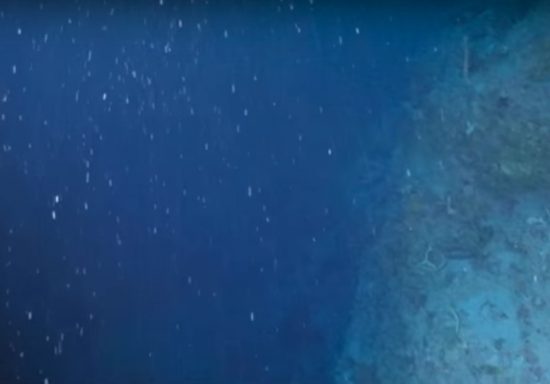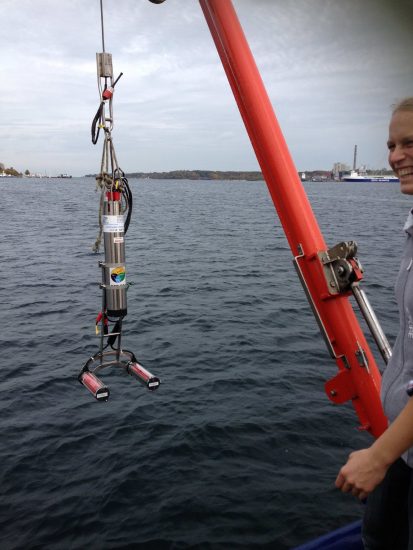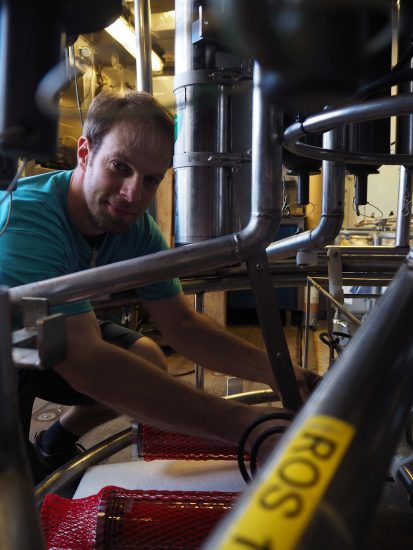





Detailed picture of biological particle flow to deep sea along the equator
Animal excrement and parts of dead organisms constantly sink from the ocean surface towards the deep sea. This particle flow, called “marine snowfall,” plays an important role in the global carbon cycle and subsequently the climate. So far, little is known about its distribution in the deep sea.
An international research team led by GEOMAR Helmholtz Centre for Ocean Research Kiel has now published a detailed image of the distribution of the marine snowfall in the equatorial ocean in the scientific journal Nature Geoscience. It differs significantly from previous ideas.
The great ocean currents, with their immense energy transport capabilities, have a decisive influence on the atmosphere and thus the climate. Besides this well-known fact, life in the seas also plays an important role in climate-related processes. In particular, the smallest creatures, tiny planktonic organisms, absorb carbon near the surface, process it, build up their bodies with it or excrete it. The carbon incorporated in the excretory products or dead organisms then sinks to the seabed. The constant flow of organic particles towards the deep sea is called “marine snowfall.”
This “snow” falls most densely where there is intensive biological production near the surface. This is the case in the Pacific and the Atlantic, especially along the equator. Until now, it was largely unclear how the particles are distributed in the depths and which processes influence the distribution. The team of scientists led by the GEOMAR recently published the first-ever study with high-resolution data on particle density in the equatorial Atlantic and Pacific Oceans at depths of 5,000 metres. "The analysis of the data showed that we have to revise several previously accepted ideas on the flow of particles into the deep sea," said lead author biologist Dr Rainer Kiko from GEOMAR.
The team has analysed data collected during several expeditions of the German research vessels METEOR and MARIA S. MERIAN, US research vessel RONALD H. BROWN, French research vessel L'ATALANTE and French research sailing vessel TARA. Among other things, the Underwater Vision Profiler (UVP) was used. This device takes up to ten images per second with a special camera when the UVP is discharged from the vessel down to 6,000 metres’ depth. These recordings allow facilitate both particle counting and the identification of small plankton organisms.
“Up to now, it was usually assumed that we have the largest particle density close to the surface and that it decreases continuously with depth,” Dr Kiko explained. “Our data show, however, that the particle density increases again in 300 to 600 metres of water depth.” The researchers explain this observation with the daily migratory behaviour of many plankton organisms, which retreat into corresponding depths during the day. “This depth seems to be the loo for many species. That's why we find a lot of particles there,” said Dr Kiko.
The many microparticles then sink very slowly and are detectable at up to 5,000 metres’ depth. “This is also surprising, because it has been assumed that only few larger, rapidly sinking particles can be found deeper than 1,000 metres,” Dr Kiko further explained.
Thanks to the interdisciplinary collaboration of the biologists with colleagues from physical oceanography, the team was able to explain another phenomenon. “In the equatorial region, the flow of particles into the deep sea is much greater than in regions that are only 100 kilometres farther north or south," said Dr Kiko. Prof Dr Peter Brandt, an oceanographer at GEOMAR, explained, “There are strong, eastward flowing deep currents north and south of the equator, both in the Pacific and the Atlantic. They form natural barriers that prevent further north-south propagation of the particles.”
All in all, the scientists were able to show the importance of biological and physical processes in the biological carbon pump for the first time. “Of course, we need further observations on the distribution of different planktonic groups in the ocean in order to further refine the image," Dr Kiko reiterated.
Link to the study: www.nature.com/ngeo/journal/vaop/ncurrent/full/ngeo3042.html
Video (NOAA): www.youtube.com/watch?v=QQ2vNeQkihw
 Herbert
Herbert 13th October 2017
13th October 2017